#AfricanBuffalo
Text
Dangerous Animals: The animal kingdom has all kinds of creatures, some are peaceful and attractive, while others are quite dangerous. In this article, we'll look at the ten most dangerous animals in the world that you definitely don't want to come across. These animals are feared and respected because they have the ability to cause harm and pose a serious threat to humans. From huge bears to poisonous snakes and sneaky predators, the animal kingdom is home to some of the most powerful enemies on our planet.
1. Grizzly Bear
Grizzly Bear
In the animal kingdom, there are peaceful and attractive creatures, as well as dangerous ones. In this article, we will explore the top ten most dangerous animals in the world that you would never want to encounter. These animals are both feared and respected because they can harm humans and pose a serious threat. From large bears to venomous snakes and stealthy predators, the animal kingdom is home to some of the most powerful enemies on Earth.
2. Great White Shark
Great White Shark
The Great White Shark, made famous by Steven Spielberg's movie "Jaws," is a large predator weighing between 1500 to 2450 pounds and reaching lengths of around 20 feet. Despite its fearsome reputation, actual attacks on humans are relatively rare. While it may bite something out of curiosity, it typically doesn't prefer the taste of humans. However, encountering a Great White Shark is still a worrisome situation due to its size and predatory instincts, which make it a potential threat. Shark attacks occur worldwide, but the number of fatalities remains low, with approximately 80 reported attacks and only five resulting in death in the past year.
3. Hippopotamus
Hippopotamus
The Hippopotamus, often seen as calm and gentle, actually exhibits aggressive and territorial behavior. Despite its large size, averaging around 3310 pounds and measuring about 5.2 feet, this semi-aquatic creature can reach speeds of up to 19 mph. It has been known to attack humans by flipping over boats and rafts, perceiving them as a threat to its territory. With its powerful jaws and notorious temperament, the Hippopotamus has caused a significant number of human fatalities in Africa.
4. Stonefish
Stonefish
The Stonefish, the most venomous fish in the world, is a master of disguise. It resembles a stone or coral and can be found in coastal waters of the Indian and Pacific Oceans. Although not naturally aggressive, its camouflage often tricks unsuspecting swimmers into stepping on it, triggering the fish to release its venom. The venom causes intense pain, tissue damage, difficulty breathing, and temporary paralysis. If left untreated, it can be deadly. Despite its danger, the Stonefish is considered a prized delicacy in countries like Japan and China, making it highly valued and expensive.
5. African Buffalo
African Buffalo
Known as the “Black Death,” the African Buffalo roams the forests and savannahs of Africa. Weighing up to 2000 pounds and capable of running at speeds of 40 mph, it is an incredibly powerful and dangerous species. The African Buffalo can face off against lions and crocodiles, often ramming and overturning vehicles with ease. Its territorial nature and aggressive behavior result in approximately 200 human deaths annually on the African continent.
6. Lion
Lion
The mighty Lion, known as the king of the jungle, cannot be left out of this list. Standing at around 4 feet tall and weighing up to 400 pounds, Lions can be a threat to humans, although they usually avoid attacking them. Most recorded cases of lion attacks are linked to sick or injured males that see humans as vulnerable prey. Once a lion successfully hunts a human, the chances of future attacks may increase. Over 500 lion attacks are reported every year, so it's important to be cautious when encountering them.
7. Saltwater Crocodile
Saltwater Crocodile
The Saltwater Crocodile, the largest reptile in the world, is a fearsome predator. Weighing up to 2600 pounds and measuring up to 20 feet long, it has one of the strongest jaws in the animal kingdom. Saltwater Crocodiles view humans as prey and can display unpredictable aggression. In Africa, it is recommended to stay away from their habitat entirely due to the significant danger they present. In Australia alone, there are over 20 attacks by Saltwater Crocodiles each year, usually driven by territorial instincts or when they feel threatened. They are responsible for the majority of crocodile attacks on humans.
8. Black Mamba
Black Mamba
The Black Mamba, known as Africa's most venomous snake, has a bold and unpredictable temperament. It can grow up to nearly 10 feet long and strike within a radius of 44 yards, delivering a deadly dose of venom. Its bite, often called the "kiss of death," injects 100 grams of poison, with just 10 grams being enough to kill a person. Symptoms of a Black Mamba bite include blurred vision, fainting, respiratory arrest, or heart failure. Immediate treatment is crucial, but in some parts of Africa, access to antidotes is limited, making encounters with this snake extremely dangerous.
9. Box Jellyfish
Box Jellyfish
The Box Jellyfish, mainly found in Australia, may seem harmless because of its transparent and small size. However, it is one of the most venomous creatures in the world. Its tentacles can extend up to 10 feet long, and its venom is capable of causing death within minutes if not treated immediately. The venom affects the nervous system and can even cause cardiac arrest. The best way to avoid this deadly creature is to avoid any contact with the water altogether.
10. Mosquito
Mosquito
Although not a typical predator, the mosquito is considered the most dangerous animal due to the diseases it carries. Mosquitoes are responsible for spreading various illnesses and parasites like malaria, yellow fever, Zika virus, and dengue, causing the deaths of more than 725,000 people each year. Despite their small size, mosquitoes have a global presence and pose a significant threat, especially in areas where preventive measures and treatments are limited. In terms of sheer mortality, mosquitoes surpass the combined impact of many other dangerous animals.
11. Cape Buffalo
Cape Buffalo
The Cape Buffalo, also called the African Buffalo, is a strong and extremely aggressive animal. It can weigh up to 2000 pounds and stand about 5.6 feet tall, with horns that can reach up to six feet in length. Cape Buffalos have caused many deaths in Africa, particularly among hunters and poachers. They can charge suddenly, and when they're in a group, they become even more dangerous. Their behavior is unpredictable, and they are ready to defend themselves and their herd at any moment. Dealing with them requires caution and respect due to their formidable nature.
12. Pufferfish
Pufferfish
The Pufferfish, also known as the Blowfish, may look cute and harmless when inflated, but it is actually one of the most poisonous fish in the world. Its defense mechanism involves puffing up its body into a spiky ball by swallowing water or air. Although not aggressive, the Pufferfish carries a powerful neurotoxin called tetrodotoxin. Even a small amount of this toxin can cause paralysis, organ failure, and death if ingested. Despite its deadly nature, some cultures consider Pufferfish a delicacy, but preparing it safely requires extensive skill to remove the toxic parts.
13. Cone Snail
Cone Snail
The Cone Snail, hiding in the oceans, is a stunning but dangerous predator. Its beautifully patterned shell attracts unsuspecting prey. However, this marine creature has a venomous harpoon-like tooth that it uses to inject neurotoxins into its victims. The venom can lead to paralysis, respiratory failure, and even death in humans.
Unfortunately, there is no effective antivenom available, making encounters with these snails potentially fatal. It serves as a reminder that the ocean holds hidden dangers, even in seemingly harmless creatures.
14. African Elephant
African Elephant
Elephants are often seen as big and gentle animals, but the African Elephant can be extremely dangerous in certain situations. They can weigh up to 12,000 pounds and stand over 10 feet tall, making them capable of trampling or injuring anything that comes in their way. Elephants typically attack humans when they feel threatened or when their territory is invaded. Despite being herbivores, they have immense strength and should be approached with caution and respect.
15. Komodo Dragon
Komodo Dragon
The Komodo Dragon, found in the Indonesian islands, is the biggest lizard in the world. It can reach lengths of up to 10 feet and weigh over 150 pounds. While it mainly eats dead animals, the Komodo Dragon is also a skilled predator with a venomous bite. Its saliva contains harmful bacteria that can cause serious infections, resulting in a slow and painful death for its prey. Although it's uncommon, attacks on humans by these powerful reptiles can be deadly.
16. Inland Taipan
Inland Taipan
The Inland Taipan, also called the "fierce snake," is the most venomous land snake in the world. It is found in the dry areas of central Australia and its venom is highly powerful. Just one bite can contain enough venom to kill multiple humans. Thankfully, the Inland Taipan is usually shy and tries to stay away from humans. However, because its venom is so potent, any encounter with this snake should be handled with extreme care.
17. Cape Cobra
Cape Cobra
The Cape Cobra, found in southern Africa, is another snake with a potent venom. It has a remarkable hood and can grow up to six feet long, commanding admiration. Its venom targets the nervous system and can cause breathing problems. Cape Cobras are defensive creatures and will bite if they feel endangered. People often come across this snake in areas close to human settlements, so it's important to be careful and get immediate medical help if bitten.
18. Sydney Funnel-web Spider
Sydney Funnel-web Spider
The Sydney Funnel-web Spider, native to Australia, is widely known as one of the most dangerous spiders in the world. Its venom is extremely powerful and can lead to serious illness or even death if not treated. These spiders are aggressive and their bites can be very painful. Encounters with humans usually occur when the spider feels threatened or accidentally comes into contact with people. It's important to seek immediate medical help if bitten, as there is antivenom available to counteract the venom's effects.
Also Read : 7 Exotic Animals You Can Keep As Pets At Home
Conclusion
Our planet is filled with many dangerous animals, including venomous snakes, spiders, mighty mammals, and cunning predators. Each creature has its own distinct features and potential dangers. It is crucial to learn about their behaviors, habitats, and the risks they pose in order to stay safe while appreciating the incredible diversity of the animal kingdom. By educating ourselves, conserving their habitats, and living responsibly alongside these creatures, we can reduce the risks associated with dangerous animals and create a harmonious relationship with nature.
Source Image : discord.com
#Animal#AFRICANBUFFALO#AfricanElephant#animals#CapeBuffalo#CapeCobra#ConeSnail#Hippopotamus#InlandTaipan#KomodoDragon#Mosquito#Pufferfish#SydneyFunnelwebSpider
0 notes
Photo

Meet the African Buffalo Less Sew More Fun Series: Meet the Africans Crochet Patterns are in my #Etsy, #Ravelry and #LoveCrafts Stores #MeettheAfricans #LessSewMoreFun #africanbuffalo #amigurumipattern #amigurumiaddict #cataniacrochetteam #schachenmayr #ourmakerlife #yarninspiration #yarnaddict #buffalo #crochettoy #rakunatelier #crochetpattern https://www.instagram.com/p/CVTcDYBrBFi/?utm_medium=tumblr
#etsy#ravelry#lovecrafts#meettheafricans#lesssewmorefun#africanbuffalo#amigurumipattern#amigurumiaddict#cataniacrochetteam#schachenmayr#ourmakerlife#yarninspiration#yarnaddict#buffalo#crochettoy#rakunatelier#crochetpattern
2 notes
·
View notes
Photo
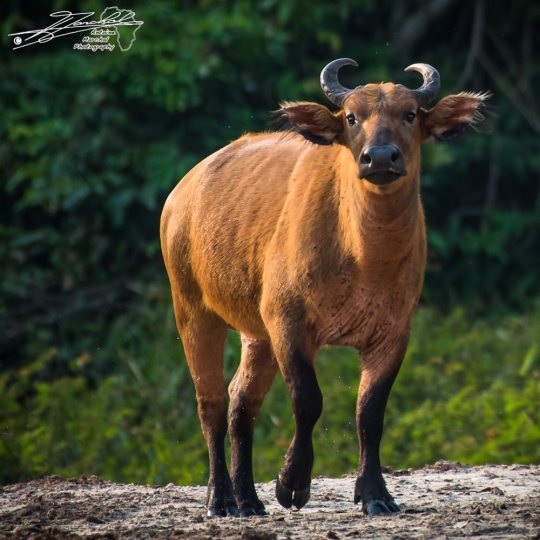
An forest buffalo in Odzala-Kokoua National Park, Western Cuvette Department, Republic of Congo. The Latin name of this subspecies is Syncerus caffer nanus and it is the smallest subspecies of African buffalo. The three other subspecies are Cape Buffalo (S. c. caffer), West African Savannah Buffalo (S. c. brachyceros) and Central African Savannah Buffalo (S. c. aequinoctialis). #forestbuffalo #buffalo #africanbuffalo #odzala #odzalakokoua #odzalakokouanationalpark #congo #africa #mammal #mammalsofinstagram #wildlife #wildlifephotography #wildlifeplanet #wildlifeaddicts #wildlifeconservation #animal #animallovers #nature #naturephotography #naturelover #naturephotographer #mammal #wildlife #animal #tropicalforest #rainforest #africageo #africanparks #AfricaGeoPhoto #yourshotphotographer (at Parc National d'Odzala-Kokoua, Congo) https://www.instagram.com/p/CU8gqX6ANAl/?utm_medium=tumblr
#forestbuffalo#buffalo#africanbuffalo#odzala#odzalakokoua#odzalakokouanationalpark#congo#africa#mammal#mammalsofinstagram#wildlife#wildlifephotography#wildlifeplanet#wildlifeaddicts#wildlifeconservation#animal#animallovers#nature#naturephotography#naturelover#naturephotographer#tropicalforest#rainforest#africageo#africanparks#africageophoto#yourshotphotographer
2 notes
·
View notes
Photo


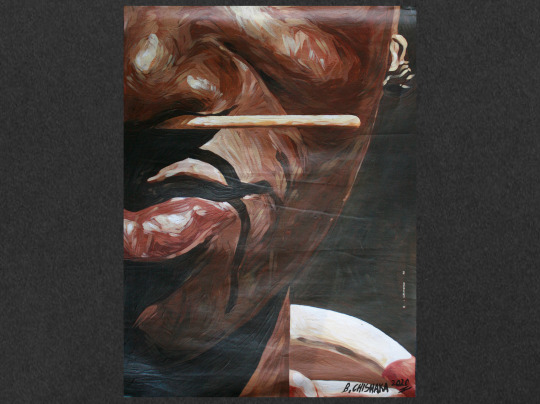


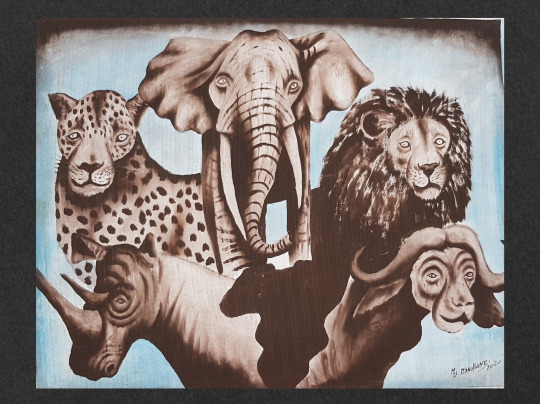




This is only some of our artwork, please come see our collection http://AfricanArt2YourDoor.com
#AfricanArt#BlackArt#OilPaintings#AcrylicPaintings#TheBigFive#AfricanArtPaintings#AfricanArtForSale#AfricanArtGallery#AfricanArtWork#AfricanWallArt#Artwork#OnlineArtGallery#African#Africa#AfricanLeopard#Art#AfricanElephant#AfricanLion#AfricanBuffalo#African Rhino
1 note
·
View note
Photo

#buffalo #africanbuffalo #art #digitalart #digitalillustration #graphicdesign #blackandwhite https://www.instagram.com/p/CNBlZn5sqlI/?igshid=1pwezpxbfbao0
1 note
·
View note
Photo

My first artwork of 2020 features the #AfricanBuffalo! This 7"x10" "Fleeting" piece was created with water-soluble wax pastels and is titled "Amaranthine". #BUFFALO #buffalos #watercolor #watercolour #watercolorpainting #painting #watercolors #watercolours #crayon #crayons #crayonart #pastel #pastels #pastelart https://www.instagram.com/p/B66upp3j8F1/?igshid=13u485b7riu9w
#africanbuffalo#buffalo#buffalos#watercolor#watercolour#watercolorpainting#painting#watercolors#watercolours#crayon#crayons#crayonart#pastel#pastels#pastelart
3 notes
·
View notes
Photo

We found the #shield! This object, crafted from #africanbuffalo hide, was commissioned by the nottingham traveler, Mansfield Parkyns, during his travels in #abyssinia from 1843-1847. My research for #nottinghammuseumandartgallery has revealed that Parkyns had this shield made from the skin of a buffalo he personally killed during a hunting expedition with some local Abyssinian rulers. Additionally, I have found that this shield served as a model for several illustrations that can be found in Parkyn’s travel narrative, further emphasising it’s significance. https://www.instagram.com/p/B7JcNSxlkEm/?igshid=1xptdasmlobtr
2 notes
·
View notes
Photo

African Buffalo @amnh !! Drawing with my students yesterday for animal drawing class. @nyaa_continuing_studies #buffalo #africanbuffalo #amnh #drawing #animaldrawing #sketchbook (at American Museum of Natural History) https://www.instagram.com/p/BpxzOFaFKo-/?utm_source=ig_tumblr_share&igshid=1mdyterhnlct9
23 notes
·
View notes
Photo

AFRICAN BUFFALO #africanbuffalo #buffalo #animals #wildlife #animalillustration #digitalart #instaart #bookstagram #childrensbooks #illustrator #illustration #vectorart #wildanimalsofthesouth #birdstagram #dieweltderwildentiere #dieterbraun #brauntown https://www.instagram.com/p/CdXqUkis3-b/?igshid=NGJjMDIxMWI=
#africanbuffalo#buffalo#animals#wildlife#animalillustration#digitalart#instaart#bookstagram#childrensbooks#illustrator#illustration#vectorart#wildanimalsofthesouth#birdstagram#dieweltderwildentiere#dieterbraun#brauntown
1 note
·
View note
Text

African buffalo
#illustration#illustrationart#art#artwork#drawing#digitalartwork#digitalart#digitalillustration#buffalo#africanbuffalo#bull#cow
0 notes
Photo

African Buffalo 🐃 this is actually 1 of 3 for a family friend. The due date is soon so I'm extremely happy that I managed to do this is 2 days 😅 🎨 #capetown #westerncape #southafrica #art #artist #artwork #artsy #instaart #instaartist #artistoninstagram #draw #drawing #oilpastel #watercolour #paint #painting #doodle #acrylic #acrylicpaint #fingerpaint #fingerpainting #africanbuffalo #capebuffalo #buffalo #wildlife #wild #africanwildlife
#doodle#watercolour#africanwildlife#acrylic#capebuffalo#instaart#artistoninstagram#artsy#acrylicpaint#oilpastel#artist#drawing#wildlife#africanbuffalo#capetown#wild#art#southafrica#fingerpainting#westerncape#fingerpaint#artwork#instaartist#painting#buffalo#paint#draw
6 notes
·
View notes
Photo

Knit, unstitch, knit, unstitch, knit oops forgot to write 🤦🏻♀️ #rakunatelier #rakunatölye #whiterhino #africanbuffalo #amigurumipattern #amigurumidesign #wildlifeaddict #wildlifelove #wildlifelovers #crochetpattern #crochettoy #crochettherapy #makeyourowntoys #makeyourowngifts #patterndesigner #wildanimalsafari #africansavannah #savannah #africanwildlife https://www.instagram.com/p/CSy5NKasGPK/?utm_medium=tumblr
#rakunatelier#rakunatölye#whiterhino#africanbuffalo#amigurumipattern#amigurumidesign#wildlifeaddict#wildlifelove#wildlifelovers#crochetpattern#crochettoy#crochettherapy#makeyourowntoys#makeyourowngifts#patterndesigner#wildanimalsafari#africansavannah#savannah#africanwildlife
0 notes
Photo

A big Cape buffalo in Akagera National Park, Eastern Province, Rwanda #capebuffalo #africanbuffalo #akagera #akageranationalpark #rwanda #africa #wildlife #wildlifephotography #wildlifeplanet #wildlifeaddicts #wildlifeconservation #safari #nature #naturephotography #naturelover #naturephotographer #naturegeography #outdoors #wildlife #nature #outdoors #africanparks #visitrwanda #africageophoto #yourshotphotographer (at Akagera National Park) https://www.instagram.com/p/CR61D1nq-WF/?utm_medium=tumblr
#capebuffalo#africanbuffalo#akagera#akageranationalpark#rwanda#africa#wildlife#wildlifephotography#wildlifeplanet#wildlifeaddicts#wildlifeconservation#safari#nature#naturephotography#naturelover#naturephotographer#naturegeography#outdoors#africanparks#visitrwanda#africageophoto#yourshotphotographer
1 note
·
View note
Photo

Oxpeckers & Cape Buffalo…a match made in…symbiosis! 🔄 The oxpeckers get a tasty meal of bugs, while the buffalo have pests removed in return (OK, yes, the oxpeckers do sometimes bite the hoofed mammals to drink blood, too, but it’s still considered a mutually beneficial relationship!). #symbiosis #mutualism #evolution #oxpecker @avibase #nevernotbirding #birding #birdtherapy #buffalo #capebuffalo #africanbuffalo #buphagus #buphagidae #passeriformes #passerines #birdwatching #birds #birdsofsouthafrica #mammalsofsouthafrica #wildlifeofsouthafrica #birdphotography #wildlifephotography #naturephotography (at Addo Elephant National Park) https://www.instagram.com/p/CSw47AmKHxw/?utm_medium=tumblr
#symbiosis#mutualism#evolution#oxpecker#nevernotbirding#birding#birdtherapy#buffalo#capebuffalo#africanbuffalo#buphagus#buphagidae#passeriformes#passerines#birdwatching#birds#birdsofsouthafrica#mammalsofsouthafrica#wildlifeofsouthafrica#birdphotography#wildlifephotography#naturephotography
0 notes
Photo
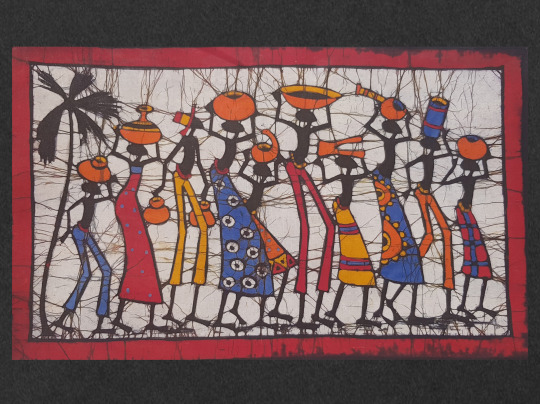

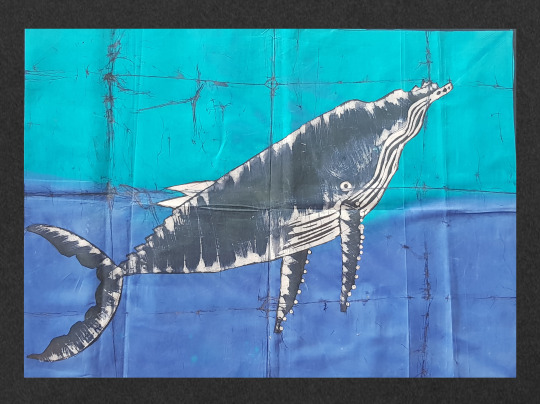
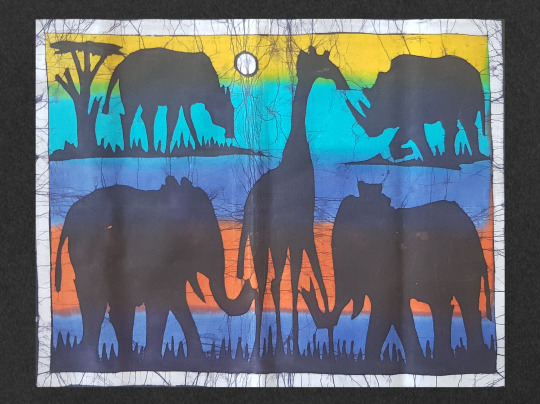

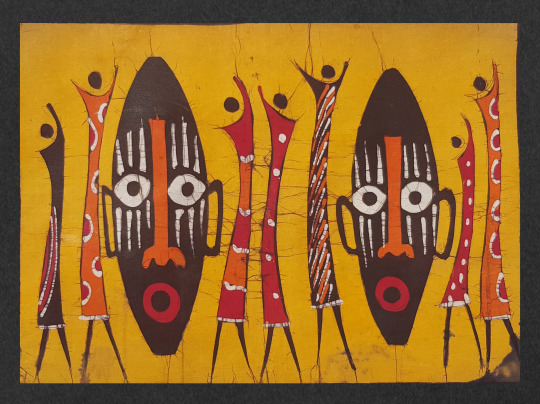
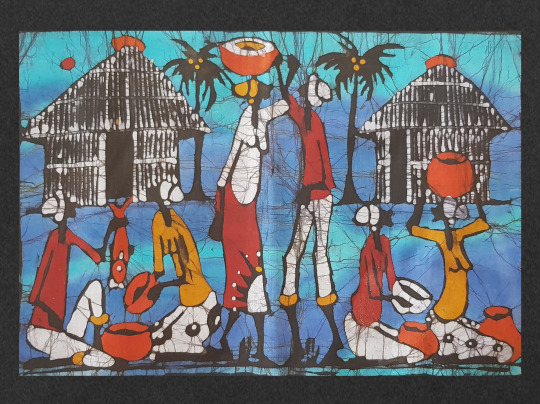



This is only some of our artwork, please come and see our collection
AfricanArt2YourDoor.com
#AfricanArt#BlackArt#OilPaintings#AcrylicPaintings#TheBigFive#AfricanArtPaintings#AfricanArtForSale#AfricanArtGallery#AfricanArtWork#AfricanWallArt#Artwork#OnlineArtGallery#African#Africa#AfricanLeopard#Art#AfricanElephant#AfricanLion#AfricanBuffalo#African Rhino
0 notes
Photo

By living in large herds and eating tall coarse grasses, Cape buffalo play a vital role in the ecology of the grasslands. Many of the smaller grazers are unable to digest the tall grasses, and the tall grasses may prevent them from getting to the shorter, more palatable grasses in the absence of buffalo. 📸@riothephotographer @olpejeta #africanbuffalo #capebuffalo #visitolpejetaconservancy (at Ol Pejeta Conservancy) https://www.instagram.com/p/CQsM3-HAtaG/?utm_medium=tumblr
0 notes